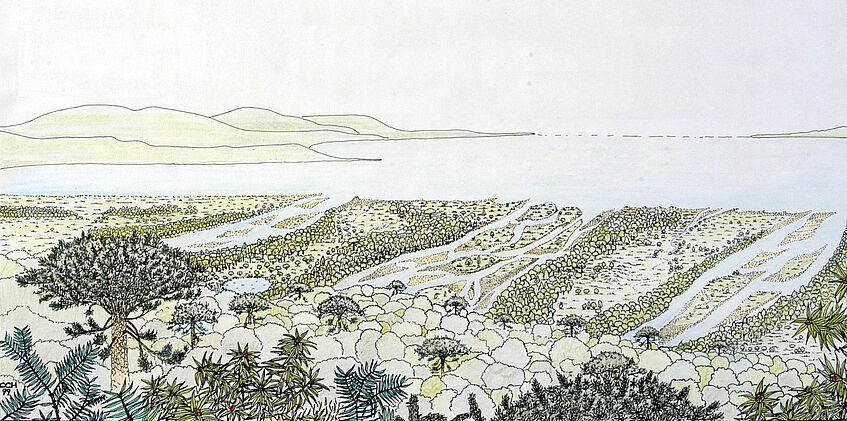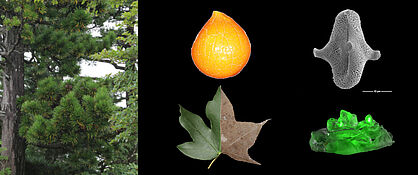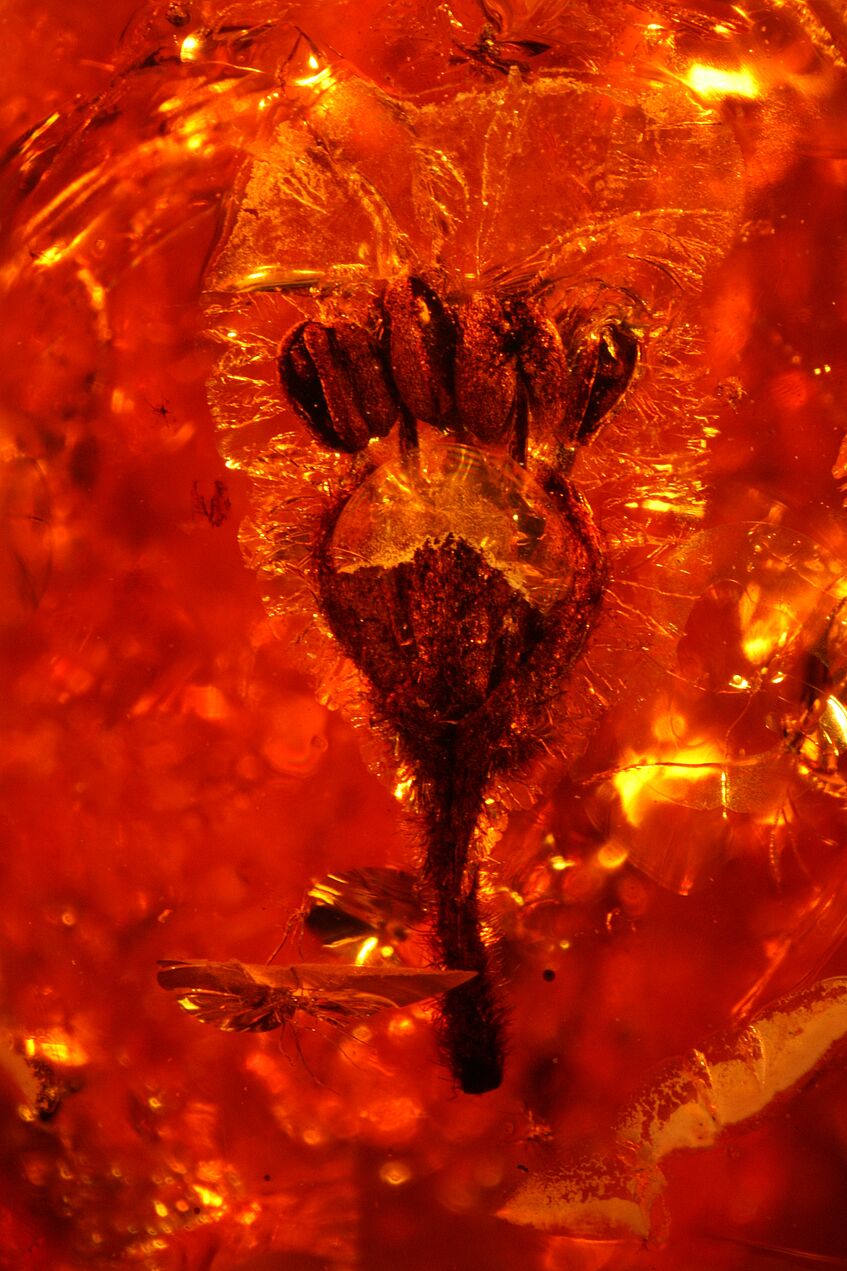Our focus is on the evolution and phylogeny of land plants and animals and the development of terrestrial habitats and ecosystems. The recontruction of morphological and evolutionary patterns and the interaction between plants and animals is done through actuo-palaeontology, taphonomy, systematics and phylogeny studies. This allows for the reconstruction of ancient habitats, vegetation units, palaeoclimate, and to evaluate palaeo-biogeographical distributions of various plant and animal groups.
The Palaeobiology in Vienna is a bridge between Biology and Earth Science working in the field as well as the lab.
Palynology and Palaeobotany
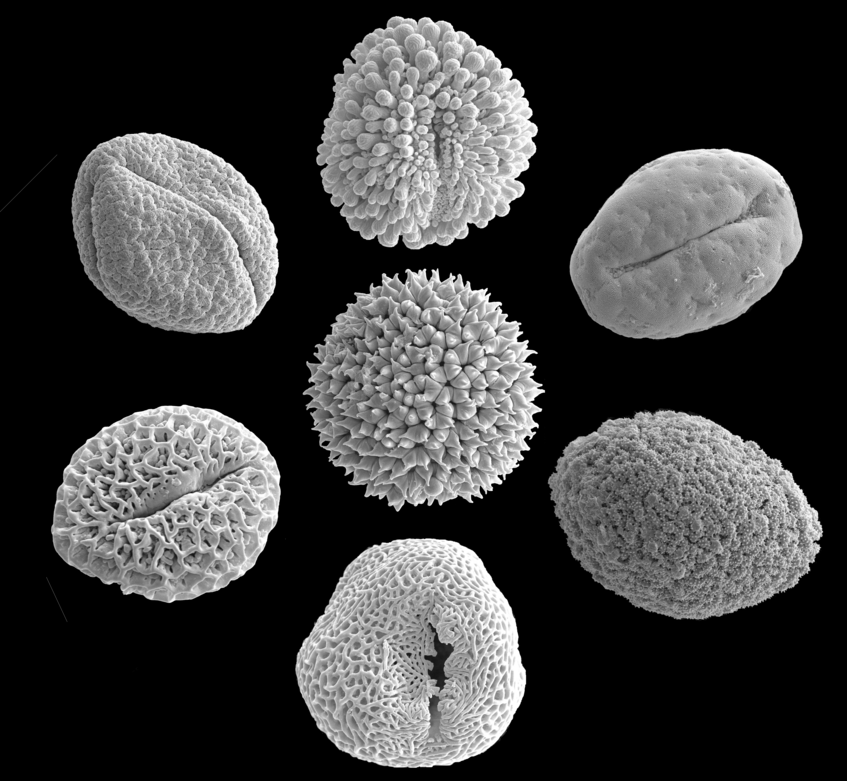
Palynology and palaeobotany in Vienna University deals with pollen and macrofossils from the Carboniferous to the Holocene. In palynology we routinely use LM and SEM.
Amber
Amber (fossilized plant resin) is best known for the well-preserved inclusions it can contain, additionally, I focus on understanding the occurence, chemistry and taphonomy of amber and resins, and the environments they can occur in. The use of ambers, together with fossil plants, as palaeoclimate markers is also being investigated.
Terrestrial mammals
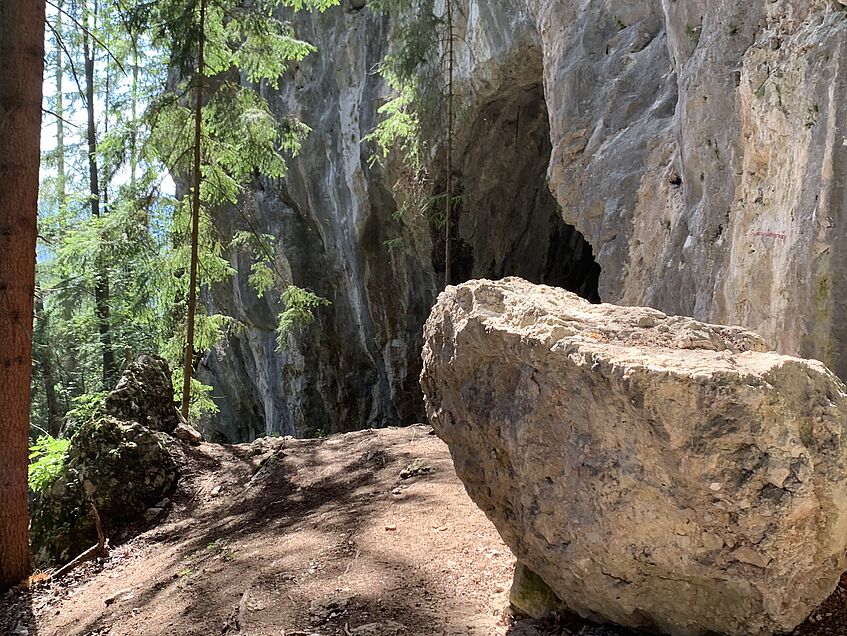
Terrestrial mammals are the focus of our palaeoecological research. These include investigations into guild structures (food preference, locomotion style and body size), as well as into the traditional taxonomy and systematics during the last 50 Millions years. For over 100 years, Vienna has the focus on Quaternary research which includes cave excavations, cave bear evolution, stratigraphy and ecological reconstruction of the last 50.000 years, from the Last Glacial Maximum to the Antropocene.
